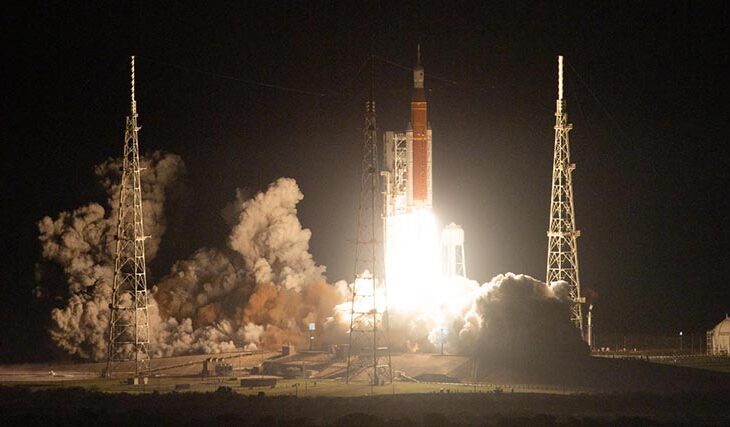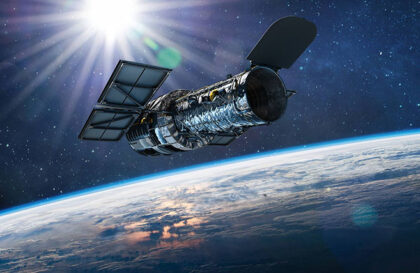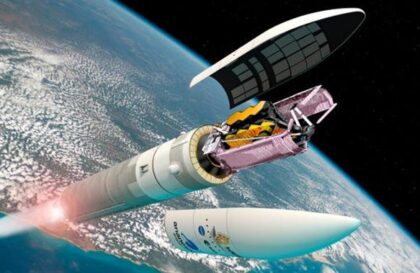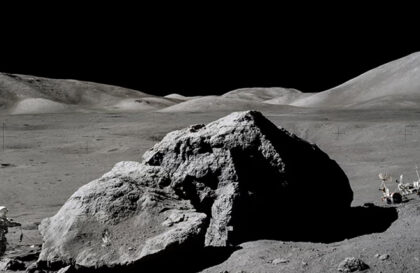Fifty years have passed since the last man stepped onto the surface of the Moon. Now NASA is preparing for a new chapter and returning to our natural satellite.
NASA’s Artemis missions aim to land the first woman and first African-American astronaut on the moon. These missions will not only study the lunar surface, but will also lay the groundwork for sending humanity to Mars.
Mission stages
The Artemis program is a series of ongoing lunar missions led by NASA that began in 2017.
One of the successfully completed Artemis missions, Artemis 1, was an unmanned test flight that reached orbited the Moon and flew beyond it in late 2022.
The following stages are currently being prepared:
“Artemis 2”
Planned launch date: November 2024.
This is a manned mission beyond the Moon that will take humans to the furthest distance in space they have ever gone.
“Artemis-3”
Planned launch date: November 2025.
The mission will be the first crewed lunar landing since Apollo 17 in 1972. NASA aims to send the first female astronaut and the first non-white astronaut to the Moon, who will spend a week on the Moon performing scientific research before returning to Earth.
“Artemis-4”
Planned launch date: November 2027.
This mission will deliver the bulk of a new lunar space station, called Gateway, into lunar orbit and land two more astronauts on the lunar surface.
“Artemis-5”
Planned launch date: November 2029.
This phase will add another important module to the Gateway and include a third crew landing on the Moon to conduct further research on its surface.
NASA’s long-term goals are ambitious: Using technology and research developed through the Artemis program, the space agency plans to launch a manned mission to Mars. The plan, known as Moon to Mars, calls for a new space station in lunar orbit and eventually a habitable lunar base.
Why is NASA returning to the Moon?
NASA aims not only to replicate the successes of the Apollo missions with the Artemis program, but also to realize the more ambitious goal of going to the Moon and establishing a permanent presence there.
This includes establishing bases both in lunar orbit and on its surface, although the main goal for now remains the return of man to the moon.
Primary goals of NASA’s Artemis mission include:
Equality: Landing the first woman and first non-white astronaut on the moon.
Technology: Development of advanced technologies, including rocket systems and spacesuits, that will serve as the basis for future deep space missions.
Partnerships: The Artemis program features extensive collaboration between NASA and commercial companies such as SpaceX and Boeing.
Long-term presence: Instead of short visits like the Apollo 17 mission, Artemis aims to establish a base that will extend its stay on the Moon to weeks or even months.
Knowledge: Thanks to increased knowledge of the Moon gathered over the past 50 years and modern technology, the Artemis missions aim to explore the Moon more strategically than was possible during the Apollo era.
Resources: The discovery of water on the Moon and potential deposits of rare minerals opens up prospects for scientific and economic exploration and exploitation of the Moon’s resources.
How will NASA return to the Moon?
The Artemis Luna mission has four main components. These include:
Orion spacecraft
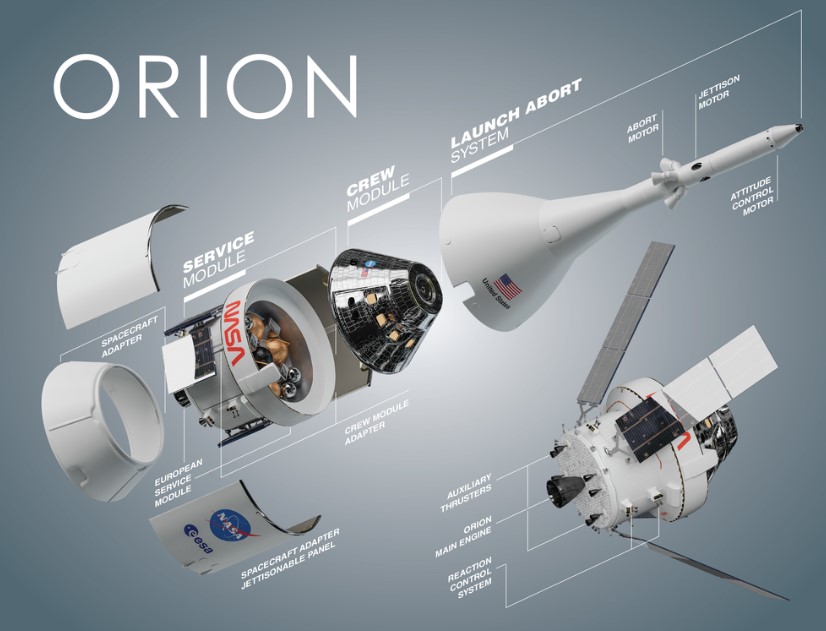
Equipped with life support systems and shuttle interfaces, Orion is the command module needed to transport astronauts in space.
Moon Gate
Gateway is a compact space station designed to orbit the Moon. Its mission is to provide a flexible platform for missions both to the Moon and beyond.
Integration with the Orion module will allow astronauts to transfer to the lunar lander.
Unlike the International Space Station (ISS), the Gateway will not be permanently occupied. Instead, it will serve as a platform where astronauts can live and conduct research for limited periods of time. In addition, Gateway will be able to continue scientific research even between missions related to visiting the Moon.
International partners such as the European Space Agency and the Japan Aerospace Exploration Agency are actively collaborating with NASA to develop Gateway modules.
The following Gateway modules are currently being developed:
Accommodation and Logistics Operations (HALO) module: This is the core structure of the space station, providing living conditions for astronauts, and is also the station’s command and control center. HALO performs key functions such as regulating the internal environment, providing power to other Gateway modules, and monitoring radiation levels in and around the station.
International Habitation Module (I-HAB): This is the second habitable element of the Gateway and the main living space for the astronauts. It is equipped with everything necessary to conduct experiments in orbit.
ESPRIT Module: This module provides advanced communications, refueling systems, and an observation window similar to that on the International Space Station.
The first three scientific instruments for Gateway have been selected. One of them is the HERMES complex for studying low-energy solar particles. The second is ERSA for monitoring higher energy radiation and space weather. The third is IDA, which will study radiation protection and effects on the body of crew members.
Human Landing System (HLS)
The Astronaut Landing System will take them from Gateway to the Moon. Unlike the Apollo lunar module, which was designed for a one-time mission, the Artemis landing systems are designed for repeated use. SpaceX will provide the HLS system for Artemis 3 and Artemis 4 with the lunar version of Starship. Blue Origin, in turn, will supply HLS for Artemis 5, which will increase the possible number of crew members and the duration of their stay on the Moon.
Space Launch System (SLS)
The Astronaut Landing System will take them from Gateway to the Moon. Unlike the Apollo lunar module, which was designed for a one-time mission, the Artemis landing systems are designed for repeated use. SpaceX will provide the HLS system for Artemis 3 and Artemis 4 with the lunar version of Starship. Blue Origin, in turn, will supply HLS for Artemis 5, which will increase the possible number of crew members and the duration of their stay on the Moon.
Space Launch System (SLS)
All these components are combined into a space launch system, represented by a launch vehicle, which will take astronauts beyond the Earth’s atmosphere and into outer space. This colossal rocket is taller than the Statue of Liberty and is estimated to cost $800 million per launch. The rocket will weigh nearly 6 million pounds (almost 3 million kilograms).
SLS (Space Launch System) is one of the most powerful rockets in the world, surpassing the original Saturn 5 launch vehicle by 15 percent in power. The SLS rocket will travel at a maximum speed of more than 6 miles per second (9.7 km per second). She can cover the distance from New York to San Francisco in 8 minutes.
The SLS is designed for deep space missions, and while the rocket itself is not headed to the Moon, its main purpose is to provide the Orion spacecraft with the boost it needs to send a crew of astronauts and cargo to the Moon.
Will going to the Moon help us go to Mars?
While traveling to the Moon takes only three days, going to Mars is a much longer and more complex mission. NASA says the Artemis program will lay the groundwork for cooperation between international space agencies and private companies to build lunar infrastructure and economies.
From this lunar base, NASA plans to eventually send humans to Mars.
Team Artemis
In 2020, NASA began recruiting new astronauts who will be responsible for missions both to the Moon and beyond. In December 2020, a new group of astronauts known as Team Artemis was unveiled.
NASA subsequently announced that all astronauts would be eligible for these missions, not just the 18 members of Team Artemis.
The crew composition for the Artemis 2 mission was officially announced on April 3, 2023. This:
Christina Koch, mission specialist
Jeremy Hansen, mission specialist
Reed Wiseman, Commander
Victor Glover, pilot
The crews of Artemis 3, 4 and 5 have not yet been announced.
Image credit:
https://www.rmg.co.uk
https://www.seti.org
https://www.rmg.co.uk
https://www.nasa.gov
https://www.nasa.gov
https://www.nasa.gov
